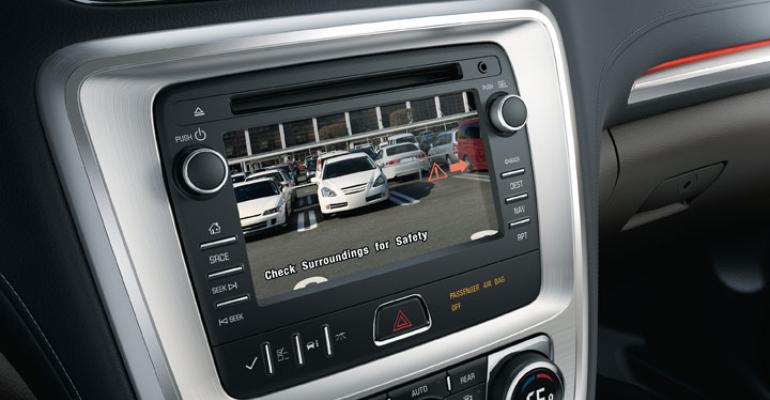The National Highway Traffic Safety Admin. is delaying new rules that were expected this week mandating auto makers add rear-vision cameras as standard equipment on all vehicles by 2014, likely because the U.S. regulator wants more time to address industry concerns.
It marks a second delay for the long-anticipated rule, which dates back to 2007 and carries a statutory deadline of Feb. 28, 2011. NHTSA fielded public comment on the rule March 23, 2011. Final language was expected today, but the agency now says only that the new rule will be issued by the end of the year.
“Safety is the number one priority at the Department of Transportation – and we give especially high priority to the safety of children,” the DOT says in a statement. “While the Department has made progress toward a final rule to improve rearward visibility, it has decided that further study and data analysis – including of a wider range of vehicles and drivers – is important to ensure the most protective and efficient rule possible.”
Phase-in timing and technical concerns by the industry could be holding up the widely supported rule, which often can happen with major safety or fuel-economy changes. The new 5-star crash-rating system from NHTSA faced several delays before its landmark changes were implemented for model-year-’11.
General Motors, for example, told NHTSA it was concerned about mandated brightness levels for the rear-vision camera screens, as well as how the rule might prevent continued use of helpful overlays such as parking-assist guidelines.
GM also takes issue with the requirement that 100% of an auto maker’s fleet have the rear-vision cameras by Sept. 1, 2014, since the rule was delayed more than one year. GM thinks the intended 4-year phase-in of the technology should end Sept. 1, 2015.
Ford, BMW, Volkswagen and Mercedes-Benz are among others to take issue with the original phase-in date.
The German auto makers see 2016 as a better deadline for 100% implementation. And all four auto makers say NHTSA overestimated the sophistication of current rear-vision cameras in determining how technically advanced the systems must be in 2014.
The U.S. on average sees 292 fatalities and 18,000 injuries annually from backover crashes, according to government statistics. About 100 of those 292 deaths involve children, lending strong argument to the rule.
NHTSA estimates rear-vision cameras would reduce annual backover fatalities by up to 112 and injuries by up to 8,300.
By and large the industry supports the rule, which would be a boon for suppliers of the technology, such as Delphi, Bosch, Continental and Panasonic. NHTSA estimates it will cost between $1.9 billion and $2.7 billion annually for auto makers to equip a 16.6-million new-vehicle fleet with the cameras.
NHTSA considered a number of other rear-vision aids, such as radar-based equipment, but eventually determined rear-vision cameras to be the most effective.
The rule comes out of 2007 legislation named after Cameron Gulbransen, a 2-year-old boy killed in 2002 when his father accidentally backed over him with the family SUV.
This year, the industry must feature electronic stability control on every new vehicle. At a cost of some $985 million in the first year, the rule is expected to save nearly 9,000 lives annually.
The ’12 model year also marks the first step in a 5-year march toward compliance with federal fuel-economy regulations of 35.5 mpg (6.6 L/100 km), which will cost the industry about $50 billion to achieve.
After ’16, auto makers will begin working toward a fuel-economy standard of 54.5 mpg (4.3 L/100 km) that by 2025, will cost the industry $150 billion.
The government expects both of the corporate average fuel economy rules to save Americans millions of dollars at the pump and to more than pay for the cost of expensive fuel-saving technologies over the course of a typical 5-year new-car loan.

